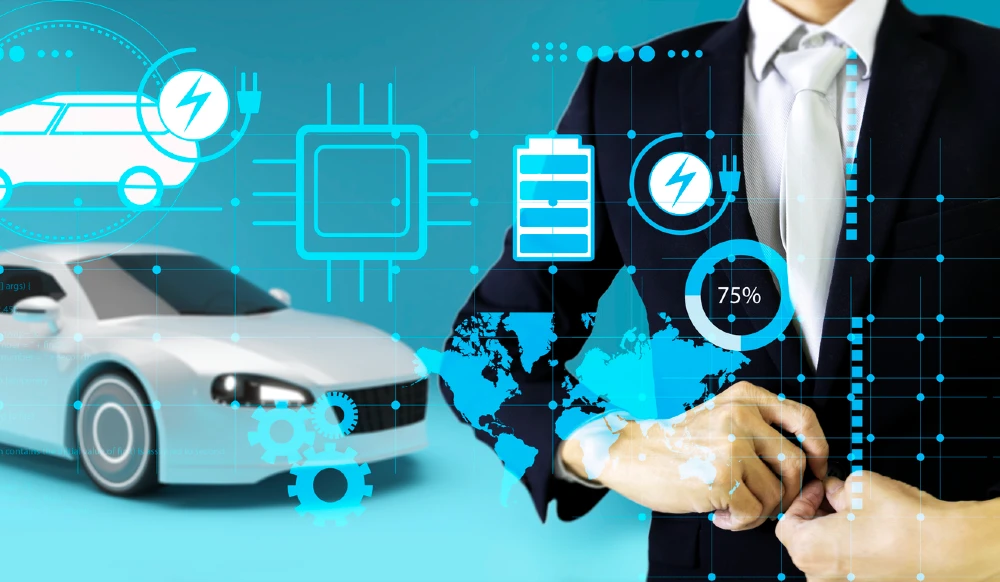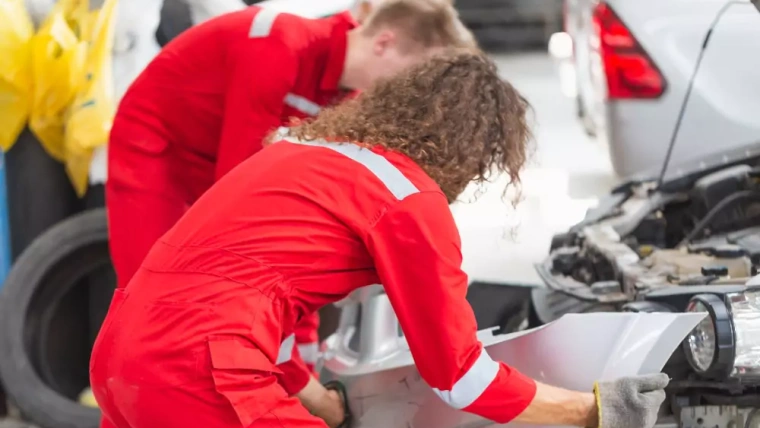In a world where innovation drives every industry forward, the automotive sector stands at a thrilling crossroads. As electric vehicles (EVs) surge in popularity, reshaping our roads and reimagining what it means to drive, auto body repair is undergoing its own transformative journey. Gone are the days when dented fenders and scraped bumpers were patched up with traditional techniques; today’s technicians must adapt to cutting-edge technologies that reflect this new era of mobility. Join us as we dive into the fascinating evolution of auto body repair—exploring how professionals are embracing sustainability, mastering advanced materials, and harnessing technology to meet the unique challenges posed by electric vehicles. Buckle up; it’s going to be an electrifying ride!
The Future of Electric Vehicles in Auto Body Repair
With the rise of electric vehicles (EVs) from brands like Tesla, Ford, and Chevrolet, the auto body repair industry is hitting the accelerator on change. EVs come with unique construction and advanced tech features—think battery packs, lightweight materials, and integrated sensors—which means auto body technicians are adapting their skills and tools faster than ever.
If your electric car needs repairs, don’t worry—our technicians stay up-to-date with the latest certifications and best practices for EVs. This includes safely handling high-voltage systems and making sure everything from body panels to electronic systems is restored with precision. Not sure what that means for you? In short: Whether you’re driving a classic sedan or the latest Tesla Model Y, our team ensures safe, proper repairs so you can get back on the road with confidence.
The History of Electric Autos
The history of electric vehicles (EVs) dates back to the early 19th century. Innovators like Thomas Davenport created one of the first small-scale electric cars in 1835. This marked the beginning of a long and often tumultuous journey.
By the late 1800s, EVs gained popularity, especially in urban areas where they were quieter than their gas-powered counterparts. A notable model was Baker Electric, which became a favorite among wealthy individuals.
However, with the advent of mass production techniques by Henry Ford in the early 1900s, gasoline vehicles surged ahead. The convenience and affordability of fuel-driven cars overshadowed electric options for decades.
It wasn’t until concerns over pollution and fossil fuels arose that interest reignited around EV technology. Automakers began investing heavily in research and development to meet new environmental standards while tapping into consumer demand for sustainable alternatives.
The Impact of Electric Vehicles on Auto Repair
Electric vehicles (EVs) are reshaping the landscape of auto body repair. Unlike traditional gas-powered cars, EVs come with unique components and technology that require specialized knowledge.
One significant change is the shift in materials used. Many EV manufacturers utilize lightweight metals and composite materials for increased efficiency. This demands new techniques in repair processes.
Battery systems present another challenge. An electric vehicle’s battery pack requires careful handling during repairs to ensure safety and maintain performance integrity.
Furthermore, training technicians becomes essential. Shops must invest in ongoing education to stay updated on EV technologies, ensuring they can tackle repairs effectively.
The rise of software diagnostics adds complexity as well. Many issues can’t be resolved without understanding advanced electronic systems found in modern electric vehicles, pushing shops toward a tech-centric approach.
Adapting to these changes means embracing innovation while meeting customer expectations for quick and reliable service.
Advancements in Technology for Electric Vehicle Repairs
The landscape of auto body repair has transformed significantly with the advent of electric vehicles (EVs). Innovative technologies are now at the forefront, streamlining repair processes and enhancing safety.
One notable advancement is the integration of diagnostic software specifically designed for EVs. These tools allow technicians to quickly identify issues related to battery systems, electric motors, and regenerative braking. This precision reduces downtime during repairs.
Moreover, lightweight materials such as aluminum and carbon fiber have become common in EV production. Advanced welding techniques and specialized equipment are essential for handling these materials effectively.
3D printing is also making waves by enabling rapid prototyping of parts that may be hard to source or expensive to manufacture. This technology not only saves time but also minimizes waste.
As tech continues evolving, so do training programs for technicians. Continuous education ensures they stay updated on best practices associated with cutting-edge EV repairs.
Challenges Faced by Auto Body Shops in Adapting to EVs
Auto body shops face a unique set of challenges when adapting to electric vehicles (EVs). One major hurdle is the specialized training required for technicians. Traditional repair methods often don’t apply to EVs, which necessitates new skills and knowledge about high-voltage systems.
Additionally, many shops lack the necessary equipment for safely handling battery components. This can lead to significant investments in tools and technology that may not have been budgeted.
There’s also an element of uncertainty surrounding parts availability. With fewer manufacturers producing EV-specific components, delays can occur when sourcing replacements.
Finally, customer education plays a crucial role. Many vehicle owners are still unfamiliar with how repairs differ for their electric models compared to conventional vehicles. Bridging this gap is essential for building trust and ensuring clarity in service offerings.
Future Predictions for the Role of EVs in Auto Body Repair
Electric vehicles are set to transform the auto body repair landscape in several exciting ways. As their popularity grows, so does the need for specialized training and equipment tailored specifically for EV maintenance.
We can expect more advanced materials in vehicle construction, which will require innovative repair techniques. Traditional methods may not suffice, pushing shops to explore new solutions that blend technology with craftsmanship.
Moreover, improvements in diagnostic tools will enable faster assessments of damage and battery health. This evolution means that technicians must stay updated on rapidly changing tech trends related to electric vehicles.
The shift toward sustainability is also influencing how repairs are conducted. Eco-friendly practices will likely become standard as customers demand greener options from their service providers.
With these changes on the horizon, auto body shops have a unique opportunity to establish themselves as leaders in this burgeoning market by embracing innovation and adaptability.
Conclusion: The Importance of Staying Ahead in the Changing Landscape of Auto Body Repair.
The landscape of auto body repair is undergoing a significant transformation. As electric vehicles (EVs) continue to rise in popularity, the industry must adapt to accommodate these new technologies. Staying informed about advancements and changes is crucial for auto body shops aiming to thrive.
Electric vehicles come with unique challenges but also opportunities for growth and innovation. By understanding the differences between traditional gas-powered cars and EVs, technicians can provide better service and attract a broader customer base. This means investing in training programs that focus on high-voltage systems, battery technology, and specialized tools designed specifically for EV repairs.
Collaboration within the automotive community will play an essential role in shaping this evolving field. Auto body shops can benefit from sharing knowledge, resources, and best practices as they navigate this transition together.
Looking ahead, those who embrace change will find themselves at an advantage. The integration of cutting-edge technology into repair processes not only enhances efficiency but also elevates customer satisfaction levels. Shops willing to innovate are likely to emerge as leaders in their markets.
As we move further into this revolution of electric mobility, staying ahead will require foresight and adaptability from everyone involved in auto body repair services. The future looks bright for those ready to meet it head-on with open minds and skilled hands.
Got an EV and have questions about bodywork or insurance claims? Contact Us—we’re here to help.



